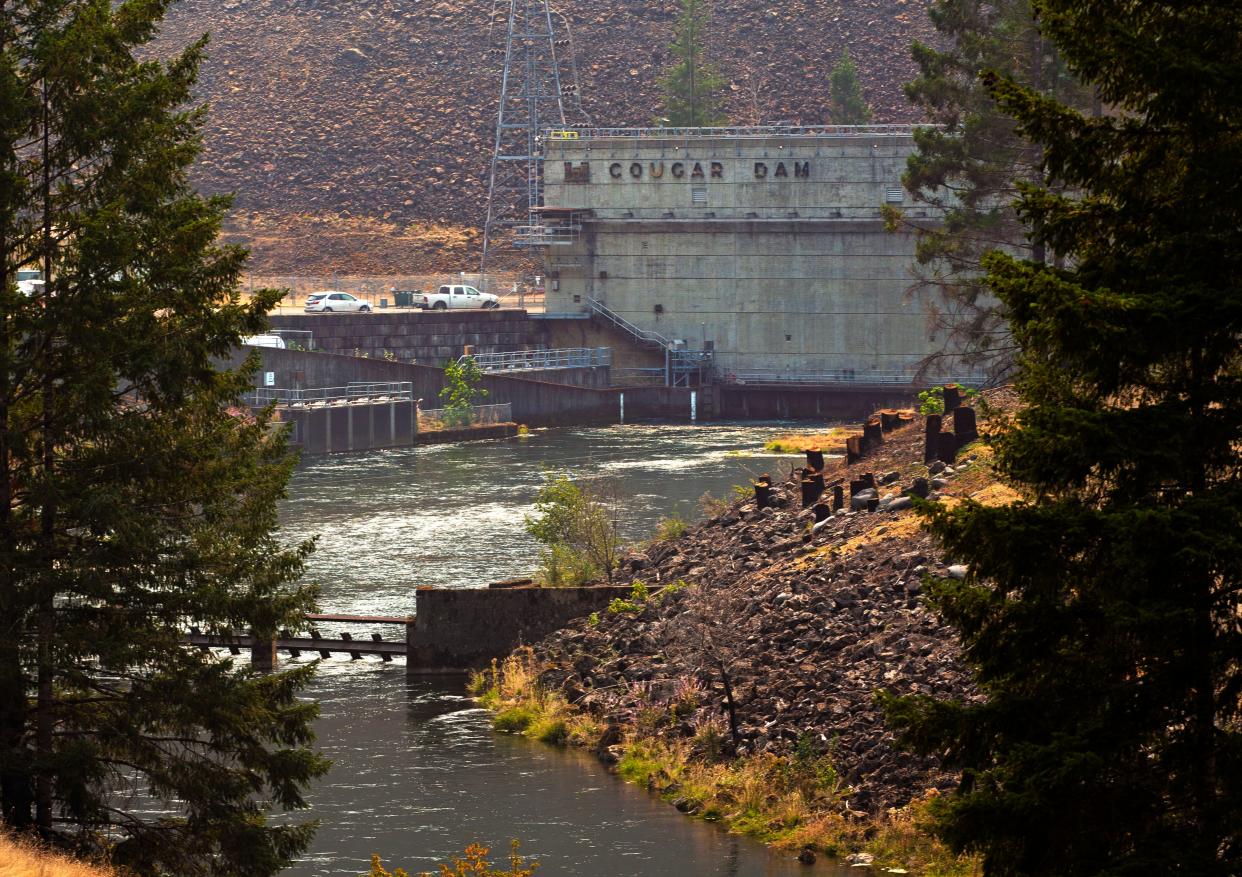Army Corps shares progress on plans for fish passage, other changes to Willamette Valley dams

The U.S. Army Corps of Engineers on Wednesday shared its progress on plans for future operations that meet its mission while protecting endangered species.
The Corps Portland District is developing a new environmental impact statement, which outlines how its work would affect surrounding environments. A revised EIS would be meant to balance tensions between the Corps' dam operations and three species of fish.
The district began revising its EIS in 2019 and plans to put out a draft in the fall. The EIS will outline the structural and operational changes the district will make in coming years.
The district operates 13 dams and reservoirs in the Willamette Valley that primarily are for flood control, but project missions also include recreation and wildlife management.
Previous coverage: At Cougar Dam, saving endangered fish means changing typical fall operations, power production
The district has been criticized by environmentalists because dams block threatened fish species' access to spawning grounds. A court has required the Corps to alter operations at some of its dams and reservoirs to correct violations to the Endangered Species Acts.
Those court order requirements are being built into the new EIS development, but the Corps plans to update its EIS are an independent action. During a virtual meeting Wednesday, the Corps provided the public information on the plans it is considering.
"We strive to walk a narrow path that balances many responsibilities. Most often, our priorities are in tension. They compete with one another," said Erik Petersen, operations project manager for the Willamette Valley Project. "Everyone is giving up something and everyone is gaining something. No one is getting anything exactly the way they want it."
The EIS process winnowed more than 700 of its original potential features and actions into 23 measures broken down across four possible alternatives for the final EIS draft.
Alternative 1: Storage-focused measures
The first EIS alternative includes measures that would increase the likelihood of refilling the Willamette Valley System reservoirs to the maximum conservation pool levels in the spring as well as structural measures for both fish passage and water quality control.
Defining elements:
Reduce minimum flows to congressionally authorized minimum flows
Construct downstream passage and water quality structures to allow more water to be stored in certain reservoirs
Construct adult fish facilities at Green Peter Dam
Restore upstream and downstream passage at drop structures at Fern Ridge
Provide Pacific lamprey passage and infrastructure
Related: Army Corps' Fall Creek Dam drawdown helps 50,000 salmon migrate to open ocean
Alternative 2A and 2B: Integrated water management, endangered fish measures
A second alternative focuses on improving fish passage with a combination of modified operations and structural improvements, as well as other measures to balance water management flexibility and meet obligations for Environmental Species Act-listed fish.
There are two options. Alternative 2A includes building fish passage structures at Cougar Dam. Alternative 2A does not.
Defining elements:
Mix of operational and structural downstream passage and water quality measures, one of which includes building a fish passage structure at Cougar Dam
Constructing adult fish facilities at Green Peter Dam
Provide Pacific lamprey passage and infrastructure
Alternative 3A and 3B: Operations-focused measures
A third alternative focuses on improving fish passage through Corps dams by modifying operations rather than adding or substantially changing existing structures.
Two options differ on the depth of annual drawdowns at Cougar Dam, which would determine whether juvenile fish pass through regulating outlets or diversion tunnels.
Defining elements:
Spring spill and drawdowns for fish passage
Allowing deep fall reservoir drawdowns at six dams
Includes Cougar Dam drawdown options
Constructing adult fish facilities
Provide Pacific lamprey passage and infrastructure
Alternative 4: Structures-focused measures
A fourth alternative focuses on building fish passage structures, water temperature control towers and facilities to reduce total dissolved gas.
Defining elements:
Construct downstream passage and water quality structures
Construct adult fish facilities
Restore upstream and downstream passage at drop structures at Fern Ridge Dam
Reduce total dissolve gas with structural improvements
Use regulating outlets to discharge cold water and spillways to release warm surface water at Green Peter Dam
Provide Pacific lamprey passage and infrastructure
Information on Corps plans can be found at https://gather.cdmsmith.com/v/NkjxE7ErqlQ.
Contact reporter Adam Duvernay at aduvernay@registerguard.com. Follow on Twitter @DuvernayOR.
This article originally appeared on Register-Guard: Army Corps shares update on possible changes to Willamette Valley dams

